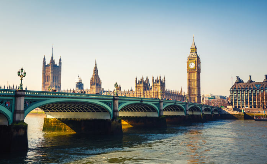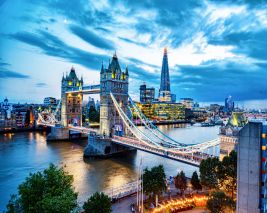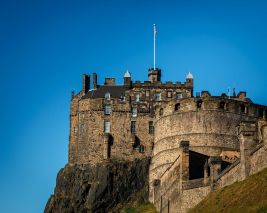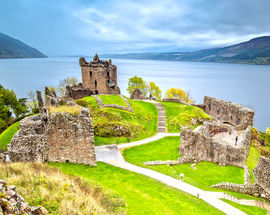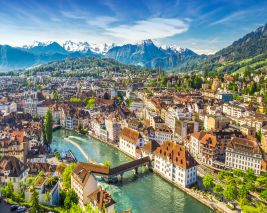London’s public transport system is supposed to be one of the best in the world. It’s efficient, fast and offers a wide range of connectivity. A good idea for those travelling to London would be to invest in an Oyster Card which is a smart card that you can top-up for fares. Oyster cards can be used across the entire public transport system in London. When you enter a station, you only need to touch the card on a reader which is usually indicated by a yellow circle and the image of the Oyster Card on it. On your way out, you have to tap the reader with the card once more. The fare amount is deducted automatically. For bus journeys, just a single tap is enough to deduct the charges. One of the reasons to use Oyster cards is that apart from the convenience, charges are also less. Oyster Cards can be bought and topped up at any Underground station.
By Bus
London is famous for its red double decker buses that are often full of commuters and travellers. Traffic makes it a little slower way of travelling the city but it’s still one of the best ways to see the city. Bus maps are at every stop, giving you details about the various routes and destinations. Bus stops also have displays that show arrival times, but the best way to keep track of the next bus arriving at the stop is by downloading an app like London Bus Live Countdown. There are also night buses which can be recognised by the letter N and are available from 11.30 am to 5 am. Do note that London buses don’t use cash and you can pay only with Oyster Card. If you are travelling with children under the age of 11, they can travel free. Those between 11 to 15 years can travel on half price.
By Underground
The London Underground also known as the ‘tube’ has 11 colour coded lines and is an extensive travelling system that can take you across the city. It’s faster than most modes of transport but also slightly more expensive. However, if you have an Oyster Card, it is definitely cheaper than a paper ticket. The other two networks that are a part of the integrated transport system are Docklands Light Railway (DLR) which operates in the eastern part of London with a driverless train and Overground network which is outside Zone 1.
By Taxi
Taxis tend to be more expensive than any other way of travelling around London. The black cabs are a uniquely distinctive feature of the cityscape and the drivers themselves have to undergo examination and training so that they know as much as possible about the city, including the 100 most visited spots of the moment. Fares are metered and are more expensive in the evening and at night.
By Minicabs
Minicabs are cheaper than black cabs but cannot be hailed directly. They have to be booked by a phone or from the minicab offices. These do not have meters but have fixed fares that have been set by the dispatcher so make sure you find it out before you leave.
By Bicycle
Cycling is a popular way of getting around the city, but it can be quite baffling for newcomers. Bicycles can be rented by simply picking them up from one of the 750 docking stations spread across London. They can be dropped off at any other docking station.
By Tram
There’s a small tram network called London Tramlink and there are only three routes that the trams operate upon – Wimbledon to Elmers End, Croydon to Beckenham and Croydon to New Addington. Tram travel is more for its charm than its practicality.
By Walking
One of the best ways to know any particular neighbourhood is on foot. So, explore away as you walk through the different streets and bridges. Pedestrian tunnels under River Thames, one at Greenwich and the other Woolwich are an interesting way to travel across the north and south ends of London. Also, for some places such as Covent Garden to Leicester Square, it might actually be quicker to walk than to take the tube.
Now that you have a sense of how to get to London, why not book a holiday to this global city? Visit our London packages, book your tickets or buy as much forex as you want at Thomas Cook!





